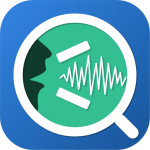“It’s not what you say, it’s how you say it” – 38% of your likability is down to your tone of voice. Discover the 1-minute Vocal WarmUp exercises that actors, teachers, presenters and influential people use to find and keep an effective, flexible, strong voice.
These are the top Vocal WarmUp techniques to help you exercise your voice and keep it in peak condition. With video tutorials, step-by-step vocal exercises and combinations for clear tone, tongue flexibility, excellent diction, releasing tension, and keeping your listeners interested.
Choose a single 1-minute WarmUp just before an important meeting, or build and save your own warmup sequences to improve your voice and keep it in great condition every day.
Every week you’ll receive a brand new WarmUp of the week, created by two of the world’s leading vocal trainers – Dr Gillyanne Kayes and Jeremy Fisher, both voice coaches on The Voice UK and authors of the bestselling book "This Is A Voice".
Each 1-minute exercise comes with a video tutorial showing you exactly how to do each technique and why it works.
The exercises are divided into sections focusing on different techniques to make your voice clear, strong, open and interesting:
Breath Control – do you run out of breath or feel your voice doesn’t have enough “support”? The exercises in this section will show you the MOST efficient way to get breath in and out of your body; how to EXTEND your breath for a consistent, confident sound; how to SUPPORT your voice to the end of every sentence
Releasing Tension – Your body and throat can tighten up when you’re nervous or stressed, which is not ideal for public speaking, teaching, or even talking on the phone. The exercises in this section show you how to release tension in your jaw, lips and tongue; how to loosen the tightness you get in your neck, head and shoulders; and how to combat the fight/flight mechanism that closes your throat up when you get nervous.
Tongue Exercises – If your tongue is stiff, inflexible or backed up in your mouth people may have difficulty understanding you. These exercises give you the best techniques for stretching your tongue for easier voicing; releasing tongue root tension to give you a more resonant voice; and a complete tongue workout for gaining fine control (that takes less than a minute).
Clear Speech – It doesn’t matter what your accent is, if you don’t have good diction your listeners will struggle to understand you or miss what you have to say. These exercises show you the most efficient way to shape your vowels, whatever accent or dialect you’re using; how to really coordinate your jaw, lips and tongue for the clearest diction; and how to work your consonants without pushing for maximum clarity without volume or strain.
Interesting Voice – You can have the best sound in the world but if you don’t use it properly you’ll lose your listeners’ interest. The techniques in this section show you exactly how to vary your pace to help your listener understand and process what you’re saying; how to find the right volume for the right situation; and how to extend and use your pitch range to keep your listeners interested.









